- Analysis
- National
- Victoria
- Naked City
This was published 2 years ago
Bread, water and the Liquorice Mile: inside Pentridge Prison
Prodigious armed robber and expert escaper John Killick, who turned 81 a few days ago, has a unique take on how to remain healthy in your latter years.
“In some ways, jail can preserve you. It is stressful, but it has steady hours, there is no boozing, and you are not running around.”
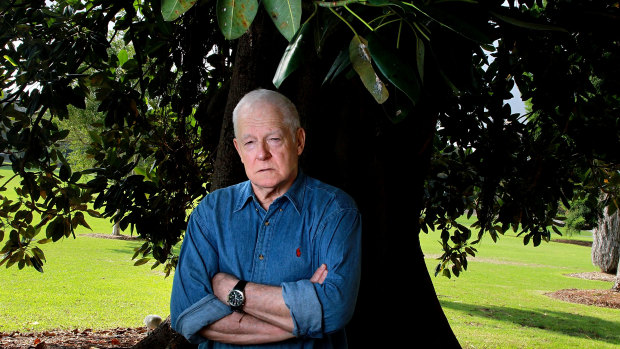
John Killick spent 30 years inside.Credit: Ben Rushton
Most of the police and prison officers from four states who chased or caged him over more than 50 years are long gone, while John has just finished his fifth book.
He is heading to Melbourne in a couple of weeks when the National Trust reopens part of Pentridge Prison, where he did six hard years from 1966 until 1972.
Those who claim modern jails are soft would do well to look at Pentridge, where giant bluestone walls hid callous brutality that resulted in angry men being released back into the community. Treat people as animals and what do you expect to get in return?
Killick first arrived in Pentridge with a red-headed inmate who refused to say why he was there — for good reason. It was Keith Ryrie, who had abducted and murdered a five-year-old girl.
They separated the two prisoners, farming Ryrie into the path of a reception party of heavy crooks who kicked him until he was nearly unconscious. “They let the crims do it. No one liked child killers.”
When he was transferred to the notorious H Division, Killick was beaten with a baton as a welcome. “I bit through my lip to stop from crying out”, knowing any noise would let other inmates know he was vulnerable.
He escaped custody in three states, first from Melbourne at the Hawthorn court. Facing two armed robbery charges, he punched one of his escorts in the belly, then “I ran down the steps — I was pretty fast then — but I got tackled by a guard. I think I was unlucky to be tackled like that in a non-rugby state.”
In 1984, while he was doing time in Brisbane’s Boggo Road Prison, a woman slipped him a replica pistol when he was transferred to a local hospital. This time, he was on the run for 12 months.

Lucy Dudko, John Killick and the escape helicopter.Credit: Fairfax Media
His most ambitious and famous escape was in 1999, when his girlfriend Lucy Dudko hired a helicopter from Bankstown Airport to take a joy flight over the nearly completed Sydney Olympics site.
Once in the air she pulled a gun and demanded the pilot land at Silverwater Prison to pick up Killick. They spent 45 days on the run. It cost him a further 15 years in jail.
He was first sent to adult prison in 1960, aged 18, for housebreaking. In 1966, he pulled his first armed robbery to raise funds to travel to the United States to reunite with his first girlfriend, Cathy Bishop.
The chatty ex-inmate gets a little cagey when asked how many armed robberies he pulled. “I’ve been convicted of nine and they are the only ones I’ll put up my hand for.”
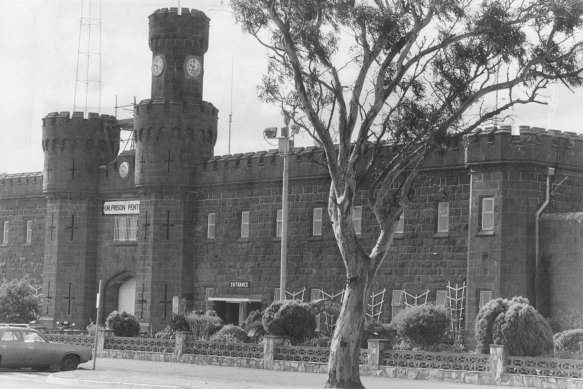
The entrance of Pentridge Prison in 1981.Credit: The Age Archives
Two were in Melbourne — a railway station for $20 (“I was drunk”) and the Kensington Commonwealth Bank, where a teller (they were armed back then) fired shots: “It just missed me.”
He gave evidence at the 1972 Board of Inquiry conducted by Kenneth Jenkinson, QC, into brutality and misconduct at Pentridge. The inquiry was called after prisoners rioted and held sit-in protests.
“I was convinced by Jockey Smith (notorious armed robber James Edward Smith, shot dead by police in Creswick in 1992) to testify. It was a cover-up,” Killick says.
While no prison officers were convicted of bashings (two were charged and acquitted), Jenkinson’s report resulted in the government loosening bail rules and banning punishments such as solitary confinement and dietary restrictions In 1973, The Age, under editor Graham Perkin, called for Pentridge to be closed. Perkin was right — just 24 years early.
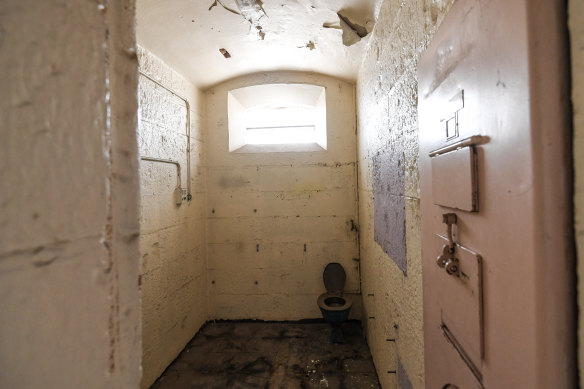
A cell in A Block of Pentridge Prison, photographed last year.Credit: The Age
Killick was arrested in 1966 in Melbourne entering the Fred Astaire Dance Studio — his American girlfriend liked to get a little funky. Inside, he says, were male and female police officers masquerading as light-footed students. “I knew there was a problem: the receptionist, her face was white. I went there to learn the tango, but they foxtrotted me out of there pretty quick.”
In the background, his loyal wife, Gloria, 82, laughs. He had plenty of female partners in crime over the years, but Gloria was not one of them.
She loved him but not his chosen career and they split during one of his many jail stints. She took him back when he was released from prison in 2014.
During his criminal career (including 30 years inside), Killick downplayed his culpability. Sure, he was a stick-up man, but he says he would never have pulled the trigger. These days, he understands the trauma he inflicted: “I now know that robbing banks creates psychological damage. It is a heavy crime.”
“I deserved to be punished, I accept that,” he adds. What still angers him was the extras: the bread-and-water punishment, being locked in a small cage (“it nearly broke me”) and being beaten with batons. “If they wanted to get you, they would get you.”
In 1968, he decided to escape from Pentridge _ a high-risk strategy, considering previous escapee Ronald Ryan was hanged the year before after he was convicted of murdering prison officer George Hodson.
Ryan’s escape partner, Peter Walker, died in detention last year as the government was attempting to deport him to his native Britain.
Killick used a smuggled hacksaw blade to cut through bars in E Wing, then cut through the weak part of the door to slip out of the dormitory with two others.
The plan was to jump a guard and force him to hand over the division keys. Trouble was the patrolling prison officer was keyless.
“He went for his gun, so I hit him. He fell down and I thought I might have killed him.”
Killick and two mates ran upstairs to barricade the door in the amenities area with an organ, starting a six-hour siege.
“Eighteen carloads of police arrived. They shot out the lights,” Killick says. He knew that if the prison officer had died, he would hang like Ryan: “I considered killing myself.”
While the guard had blood pouring from his head after he was struck with a bar, the wound was superficial and he received five stitches.
If it had escalated, it could have ended in a riot with inmates being shot. Instead, prison governor Ian Grindlay used a bullhorn to negotiate. Bellowing loud enough for every prisoner to hear, he made promises. Killick would have to do his remaining four years in the top-security H Division, but any new charges would be dealt with quietly in the magistrates’ “jail” court.
“He kept his word,” says Killick. He stepped out fearing he would be killed. Instead, he was marched straight to the secure cell that held Ryan before he was hanged.
Released in 1972, Killick continued to commit armed robberies, get caught and plot escapes, culminating in the 1999 helicopter escape.
When he was finally released, he was kept on long-term parole, meaning he couldn’t leave New South Wales. When it lapsed in September last year, he flew to Melbourne to revisit Pentridge, remembering the barbaric nature of D Division, where prisoners on remand were herded into open yards in the middle of winter and forced to use an open shower block: “The conditions were absolutely shocking.”
In H Division, the inmates broke rocks and had tiny exercise yards that, if they existed in a modern zoo, would create public outrage.
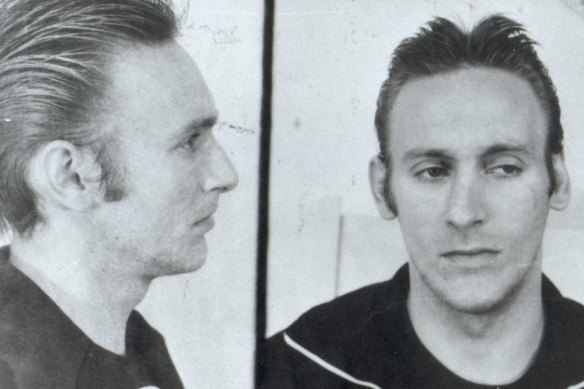
Gregory John Peter Smith (aka Greg Roberts), the “Building Society Bandit”.
Armed robber, escapee and author of the bestselling Shantaram, Greg Roberts remembers being advised by standover man and author Mark “Chopper” Read to prepare for the reception when he entered H Division.
It was called the “Liquorice Mile”, where guards lined up to beat inmates as they entered.
Read told him not to run or cover his head, or it would be seen as weakness.
Read, he says, strolled down, seemingly impervious to the blows hitting him on the head, chatting to his attackers as if nothing was happening.
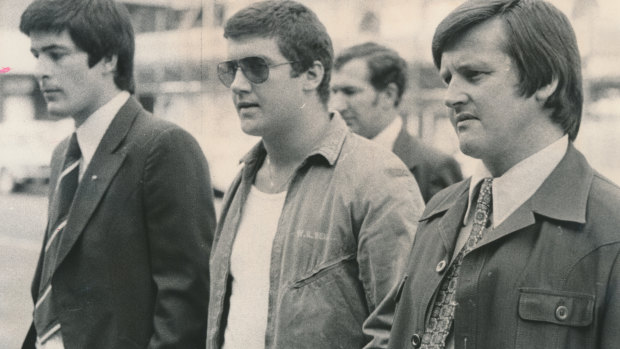
Mark Read heading to court after pointing a shotgun at a judge.Credit: Staff reporter
Pentridge is filled with ghosts and stories. The drug trafficker and international pole vaulter who asked for a pole to practise inside; the request was refused. The prison riot where a guard broke a baton on Read’s head before the bloodied inmate advised him not to do the same to the next inmate because “he hates screws”. The infamous H Division sausage war, which resulted in multiple bashings and stabbings after Read was accused of eating all the snags to be served for Christmas; and the 1987 Jika fire, in which five inmates died.
From March 1 the 90-minute National Trust tours will take visitors through the rock-breaking yards plus A, B and H Divisions, which remain largely untouched since the prison — which opened in 1851 — closed in 1997.
After a life of crime, Killick says, “I know I did bad things”, but he says he has spent his latter years counselling people heading down the same track in the hope of paying back his debt: “I think I’ve just about broken even.”
His recollections of Pentridge will be published in his next book, Outlaw, to be released next month. The proceeds will go to an international fund for underprivileged children.
The Morning Edition newsletter is our guide to the day’s most important and interesting stories, analysis and insights. Sign up here.